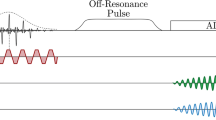Abstract.
The aim of this study was to review the physical basis of MRI using hyperpolarized noble gases as well as the present status of preclinical and clinical applications. Non-radioactive noble gases with a nuclear spin 1/2 (He-3, Xe-129) can be hyperpolarized by optical pumping. Polarization is transferred from circularly polarized laser light to the noble-gas atoms via alkali-metal vapors (spin exchange) or metastable atoms (metastability exchange). Hyperpolarization results in a non-equilibrium polarization five orders of magnitude higher than the Boltzmann equilibrium compensating for the several 1000 times lower density of noble gases as compared with liquid state hydrogen concentrations in tissue and allows for short imaging times. Hyperpolarization can be stored sufficiently long (3 h to 6 days) to allow for transport and application. Magnetic resonance systems require a broadband radio-frequency system – which is generally available for MR spectroscopy – and dedicated coils. The hyperpolarized gases are administered as inhalative “contrast agents” allowing for imaging of the airways and airspaces. Besides the known anesthetic effect of xenon, no adverse effects are observed in volunteers or patients. Pulse sequences are optimized to effectively use the non-renewable hyperpolarization before it decays or is destroyed, using fast low-flip-angles strategies to allow for dynamic/breath-hold imaging of highly diffusible (He) or soluble (Xe) gases with in vivo T1-times well below 1 min. Since helium is not absorbed in considerable amounts, its application is restricted to the lung. Xe-129 is also under investigation for imaging of white matter disease and functional studies of cerebral perfusion. Magnetic resonance imaging using hyperpolarized gases is emerging as a technical challenge and opportunity for the MR community. Preliminary experience suggests potential for functional imaging of pulmonary ventilation and cerebral perfusion.
Similar content being viewed by others
Author information
Authors and Affiliations
Additional information
Received 10 September 1997; Revision received 24 November 1997; Accepted 1 December 1997
Rights and permissions
About this article
Cite this article
Kauczor, HU., Surkau, R. & Roberts, T. MRI using hyperpolarized noble gases. Eur Radiol 8, 820–827 (1998). https://doi.org/10.1007/s003300050479
Issue Date:
DOI: https://doi.org/10.1007/s003300050479




